10 minutes later, we overhear a VHF radio call in heavily-Spanish-accented English.
“Boat with the French flag… this is Valencia… you have anchored too close.” (Boat names changed to protect the innocent.)
Crickets…
Again. “Boat with the French flag… this is Valencia… you have anchored too close.”
Silence.
Again, with a bit more emphasis.
Silence.
The oblivious yacht is a 40ft Beneteau sailboat, so we’ll call him Mr. Beneteau. We cannot see his boat name and apparently neither can Valencia. It’s on his stern, probably in foolish flowery font – why owners don’t make their boat names clearly visible is beyond me.
The Audacious Mr. Beneteau
The French boat had anchored too close for Valencia’s comfort. Except Mr. Beneteau’s VHF radio was off so Valencia could not relay his analysis on the matter. While one Valencia crewmember kept trying to hail them over the radio, the other crewmember stood on the bow, waving arms, shouting in vain through the wailing 20kt wind. You’d be surprised how little sound carries in 20 knots of wind. If you prefer not to shout, or it’s too windy to do so, a good way to get someone’s attention is just stand on the bow, arms akimbo and glower at the offending boat. Pointing helps. Eventually they will notice. And they did.
So finally I hear heavily-French-accented English, coming from a very weak radio signal, hailing Valencia. But now Valencia is not hearing them. Wow. This just gets better and better. Grammy-winning evening entertainment!
Eavesdropping
After several unanswered return calls from Mr. Beneteau, Valencia responds and they switch from a hailing channel to a talking channel. Of course we switch too, duh. #1, we want to listen in on this highly entertaining shit show, and #2, we have a stake in this conversation. It might be our shit show when the wind switches. Don’t judge. Everybody does it.
Valencia (flustered woman):“You have anchored too close to our boat.”
Mr. Beneteau (a meek, high-pitched, squeaky woman): “Oh, no, no…it’s OK.”
Valencia (now obviously irritated): “You are right on top of our anchor.”
Mr. Beneteau: Crickets…
“It’s OK” means “I don’t care”
Brian and I look at each other, jaws dropped. OMG. Did she just say “It’s OK”? Seriously, that’s not the right answer. But it’s always the answer. Our first year in La Paz, I described our dealings with another cruiser saying that exact same thing to us in this exact same anchorage about the exact same issue. We both start laughing at the irony.
Did they move? Nope.
We waited and watched, doing a mild bit of staring-down of our own. See, we’d prefer they move too. But they remain consciously obtuse - irreverent towards the safety-comfort-level of their neighbors. While pretty close, we feel Mr. Beneteau is a tolerable distance, so we opt to stay put. But Valencia, the boat so offended as to call Mr. Beneteau out on his proximity, does not move either. Either they decided they weren’t in dire straits, or they were just too lazy to get up and move.
Anchoring Etiquette: Don’t be a Dingo
In general, anchoring etiquette is simple: if you as the anchored boat think the incoming boat parked too close (and announces so), it is on the incoming guy to move; but if they refuse, and you remain, and an accident ensues… who do you think your insurance company will hold responsible for your boat damages? If you are uncomfortable with the situation enough to voice your opinion… and the other boat is a dingo and refuses… a healthy fear for the safety of your boat should prompt your departure, regardless of ego or convenience.
Fast forward several days later and we are anchored in San Evaristo, pondering this identical predicament…
San Evaristo Cluster-Fun.
A very large, very old, very ugly powerboat/barge contraption chugged its way into the snug harbor. I picture a 70ft, two-tiered version of the grimy, barnacle-encrusted “African Queen” (from the Katherine Hepburn movie of same name). It really didn’t look like that at all, but the offensive boat became personified as such in my mind as soon as he plopped his anchor down… right on top of us.
Now, when I say right on top, I mean it. This is not Valencia vs. Mr. Beneteau spacing, both with decent enough distance to remain in place all night. This was downright painful, body-hugging, spandex tight.
Radar Blob Monster
Intimidated by his size and proximity, I actually turned on the radar to confirm our suspicions about their distance. Our buddy-boat, Lorelei, was about 200ft to our left – a close but respectable distance for a friend-boat who you are comfortable yelling at if all hell breaks loose. But The African Queen’s massive radar blob was glowing like the sun, merely 100ft away. Damn…my eyes! Are you kidding? We have nearly that length of anchor chain out! This guy WILL whack us when we inevitably swing around to the west at night.
Now highly agitated, we glowered. We scowled. We gave our best disgusted glare. We waited for him to realize the error of his ways; sometimes they do and re-anchor. But African Queen appeared perfectly content attached to our hip.
So we opted to move, sans confrontation. We could already predict the answer anyway: “No really, It’s OK!” The African Queen was so big, and so NOT-maintained we did not relish them picking up and re-anchoring anywhere nearby. Would you want to park your still-in-good-shape 1990’s BMW next to a rusted-out, 1960’s Suburban tank? No. The screaming baby-on-board was the deal breaker. We’re out! We picked up anchor (ending up nose-to-nose within 20ft of their bow) and waved as we drove out the bay. Thanks, Dingo.
North Shore Sanctuary
Moving around to the north shore of San Evaristo, we safely ensconced ourselves in the wide bay, devoid of dingos. Only one other boat was parked…waaaay over there. Sigh. Peace.
Just as it was getting dark, our buddy boat, Lorelei, motors around the corner. What are you guys doing here? Well, they had their own anchoring saga to relay. Apparently, San Evaristo was THE place NOT to be tonight. Too bad we’d turned our radio off and missed THIS evening radio show…
Beware the Charter Catamarans
After we left, 4 charter catamarans traveling together like a pack of wild dingos tried to squeeze their wide-load rear ends in the already limited front row space. Two attempted to side-tie (tie together side-by-side with only fenders between and one boat’s anchor down) in between the now 300 feet between Lorelei and African Queen. Two 15ft boats swinging on one anchor in such close proximity to the others could have been catastrophic. Especially since oblivious charter cats habitually put down like 30 feet of scope, kind of like anchoring 20 tons with a fish hook.
Herding Cats
These catamarans were first warned by two boats that this was not a good idea, there’s not enough swing room for their double mass. In return, what did their dingo leader say? Everybody now… “No, no, It’s OK!” To which both cruisers shouted “NO, it’s NOT OK!” Herding cats is impossible.
Finally, after several other anchored boats expressed their extreme vocal displeasure, the cats reluctantly gave up the side-tying but continued their squeeze. With the obnoxious group boxing them in on both sides and still a bit too close for comfort, Lorelei grudgingly gave up and relocated to our neck of the woods. Sometimes you just can’t win these battles. I am regretful that our friend had to move out of these dingos’ way…but African Queen had it coming!
A Final Dressing-Down
Coincidently, as I began to edit this blog, I heard a one-sided radio conversation on this very topic. I recognize this particular woman’s teacher-like voice from the local radio net. Anchored in Isla Coronado, she incredulously and vehemently pronounces the following to someone whose response I can’t hear:
“Well I have no idea why in this big bay you picked that spot? We have a very heavy boat, we don’t swing the same way and we will be pointed west tonight so you will be right on top of our anchor once the wind switches.”
Ouch. I’m pretty sure that dingo moved.

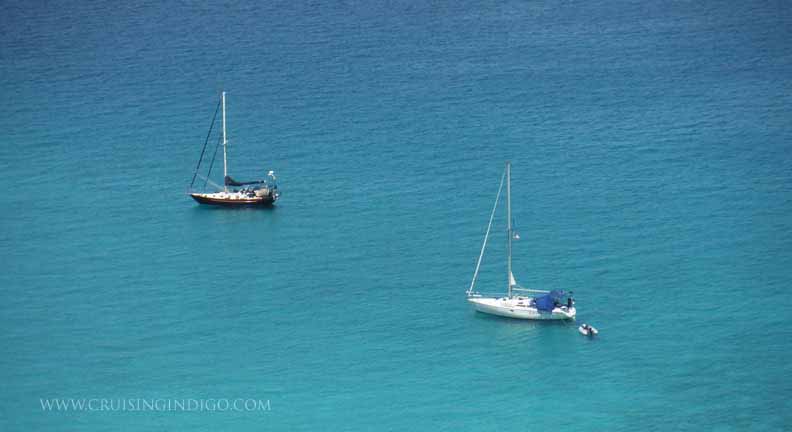
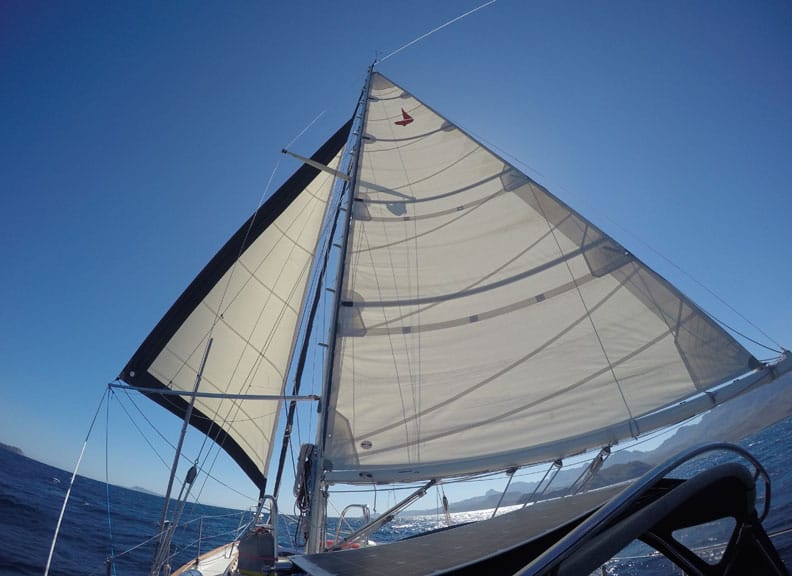
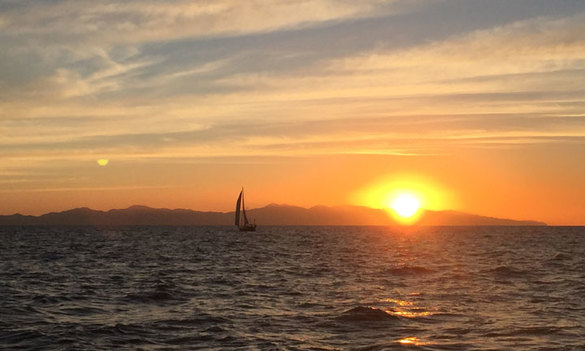
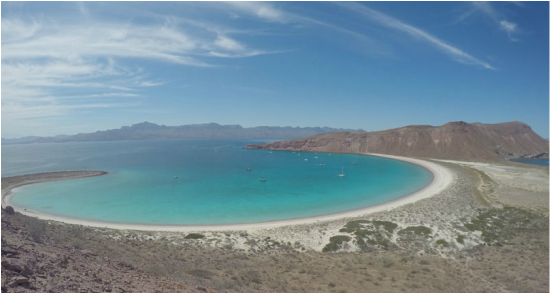
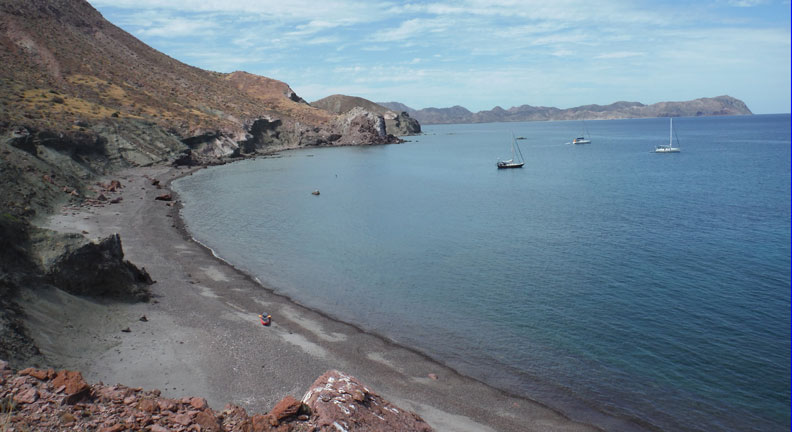
 RSS Feed
RSS Feed
